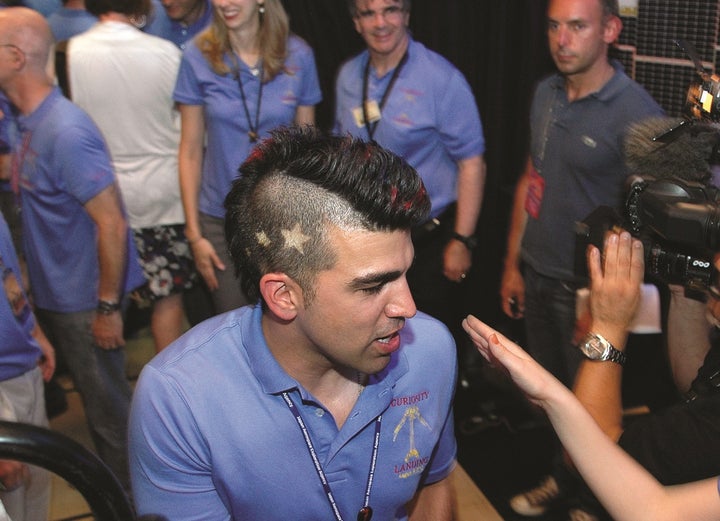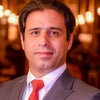
With the goal of harnessing the untapped potential of Iranian-Americans, and to build the capacity of the Iranian diaspora in effecting positive change in the U.S. and around the world, the Iranian Americans’ Contributions Project (IACP) has launched a series of interviews that explore the personal and professional backgrounds of prominent Iranian-Americans who have made seminal contributions to their fields of endeavor. We examine lives and journeys that have led to significant achievements in the worlds of science, technology, finance, medicine, law, the arts and numerous other endeavors. Our latest interviewee is Bobak Ferdosi.
Bobak Ferdowsi is the Fault Protection lead on the NISAR joint Earth observation mission with India at NASA’s Jet Propulsion Laboratory. His prior positions have included Launch, Cruise, Approach Engineering Lead and Flight Director on Mars Science Laboratory Curiosity, Science Planner on the Cassini mission, Flight Software Product Line System Engineer, and Europa Clipper Mission Planner.
Bobak earned his Bachelor of Science degree in Aeronautics and Astronautics in 2001 from the University of Washington and subsequently his Master of Science in the same area from Massachusetts Institute of Technology.
Bobak has always wanted to find life elsewhere in our universe. He plays shortstop in the Jet Propulsion Laboratory softball league and usually rides his bike to work.
Tell our readers where you grew up and walk us through your background. How did your family and surroundings influence you in your formative years?
I was raised by my Iranian dad and American mother in the East Bay Area in California. Then, I moved to Tokyo for a couple of years, where I lived with my paternal aunt. I think living in the Bay Area in a multicultural household, and then moving overseas, contributed heavily to a sense of belonging to a global community, and recognizing the wonderful things each culture brings to the table. There’s little doubt in my mind that one reason I love space exploration is that it can be a unifying force and experience for humankind.
What has been your personal key to success? What were the biggest inspirations for your career?
I’m not sure I’m really successful yet (I mean I am very fortunate to get to do this job), but I think it’s mostly been trying to improve myself both personally and professionally. I was lucky in that my first job connected me with some wonderful career mentors, allowing me to gradually learn what I enjoy doing, what I want from a career, and not feel pressured into career moves. I didn’t appreciate that building robots to visit other planets was a job until shortly after graduating from high school in 1997, I watched the Mars Pathfinder land.
How did you end up working in the space program? And how did you get on the Mars Curiosity team?
After Mars Pathfinder, my path was pretty straightforward. I started out thinking about majoring in Physics instead of Aerospace Engineering, and worked in a physics laboratory for most of my time at college (I still love physics). After graduating from the University of Washington, which had an Aerospace Engineering department, I went to MIT for a Masters in the same field. From there, I was very lucky that a friend and classmate of mine ended up working at NASA’s Jet Propulsion Laboratory first, and helped me get my job. Curiosity ended up being mostly happenstance – there was a job opening when I was hired, and I started on it part-time until transitioning to full-time after about a year.
You worked as a mission planner on NASA’s first nuclear-powered Mars rover The Curiosity - one of the most technologically advanced mission to Mars yet. Could you tell our readers about the challenges of controlling a robot on Mars?
Personally, a lot of the challenge was this was the first time for me. As an institution, JPL has landed a number of missions on Mars, and quite a few members of the team had prior experience doing so, so I tried learning from them what I could. More often than not, I learned how not to do things. Seems like most of our lessons learned tend to be “this didn’t work so well, so let’s try to do better next time,” even in our biggest successes. Technically, one of the often-overlooked challenges (besides the complexity of such missions), is the time delay between Earth and the spacecraft / rover. At launch, the delay is seconds between command and the spacecraft acknowledgement, but by the time we reached Mars, that was 14 minutes round trip – the time it takes at the speed of light for our commands to get there, to execute, and then send back a response. Accordingly, we had to build in a lot of autonomy. There’s no way to joystick a landing (or even operate it from day-to-day) with that delay, so the spacecraft and rover have to be able to execute things on their own without checking-in with humans.
What is the biggest challenge you have faced in your career?
Self-doubt. While I consider myself extremely fortunate to work here with such incredible people, the flip-side of that coin is that sometimes it’s difficult to believe that I am at the same level.
What advice would you give to students who want to take the same career path as you?
Do it! It’s a very satisfying career. Just remember it’s not always easy, so learn to make connections with other people in the same boat. It’ll help you be a better engineer (communication skills are crucial) and it’ll help you when you’re struggling.
How can our readers stay current on what you’re doing now? What are you exploring for the next few years?
I tweet a fair amount (@tweetsoutloud), but really there’s so much more going on at NASA and so I strongly recommend following as many of the NASA-operated accounts on social media (I think we’re on every major one nowadays). I personally enjoy NASA JPL’s (@NASAJPL) the most, since it covers a lot of our robotic missions as well as Earth sciences that I’m very proud of. As for me, I recently transitioned from what promises to be an incredible mission to Jupiter’s moon Europa, to a joint Earth science mission with India’s space agency called NISAR. The opportunity to work with an international partner on a mission that can really impact our understanding of our world, led me there.
What excites you most about the future of NASA?
Well, I’m always excited to visit places in our solar system or learn about exoplanets (always with the hope that we’ll learn we’re not alone in the universe), but one of the most exciting things to me is that the future of NASA and the space industry in general. There is the increasing collaboration with private industry and international partners. Hopefully, this will allow the next generation of missions to represent even more of the world than ever so more people can participate.
Your hairdo got the attention of the whole world during the landing. How did you create that fabulous hair? Did you ever think you would become a meme? What was it like to become an instant celebrity?
Surreal. I don’t think anyone goes into NASA thinking “one day I’ll be famous” so I was caught off-guard. The emotions of the landing were a lot to deal with, but I was very fortunate that the team was supportive and I am really proud to help represent the project and agency that I care deeply about. My hair came from a tradition started a few years earlier of celebrating our major accomplishments with a different pattern in my hair – for example System Test 5 (our 5th major test of the vehicle here on Earth before launch) led to a Roman Numeral V on the side of my head. By the time of landing, everyone on our team knew I was going to do something, so my boss beat me to the punch, sending out a survey to the team to vote on what my hair should look like.
What does being an Iranian-American mean to you?
For me it means I feel like a global citizen. I’m proud of both my heritages, but ultimately my allegiance is to helping to understand the context of what it means to be human and to help our planet and everyone on it. It’s also a reminder to me that the future I want to see (and that I am trying to create) is one where we can better recognize we are all more the same than we are different. I think that the perspective of space is one powerful way to do that.
